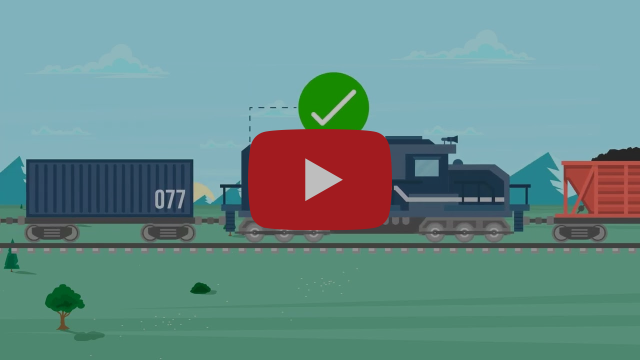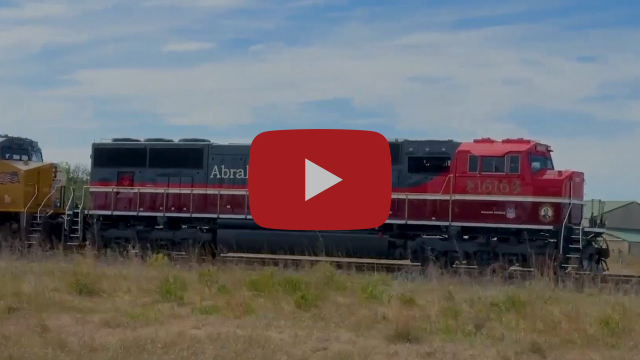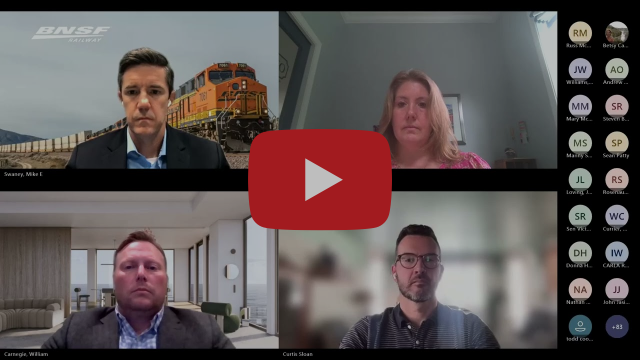TUNE IN – The Signal – 6/18/25
FREIGHT RAIL’S SURFACE REAUTH PRINCIPLES
Today at 10:00 a.m. EST, AAR CEO Ian Jefferies will testify before the Senate Commerce Subcommittee on Surface Transportation, spotlighting opportunities to strengthen the rail network through the upcoming surface transportation reauthorization.
Freight railroads already move 1.5 billion tons of goods each year across a nationwide network—cutting emissions, reducing highway congestion, and operating on privately funded infrastructure. With strong safety records and competitive pricing, freight rail plays a central role in America’s supply chain.
With smart policy, railroads are poised to do even more to power a competitive, sustainable, and connected America. These priorities should guide action:
Invest in partnerships through INFRA, CRISI, RAISE, and other programs that unite public and private sector strengths.
RAILROAD 101: TRAIN LENGTH
There’s no universal definition of a “long train,” but railroads have safely operated trains over 7,500 feet for decades. Today, the median train length is 5,300 feet, and only 1% of trains exceed 14,000 feet. Railroads remain committed to safe, sustainable operations, regardless of train length. Here are the facts:
- Trains have grown longer to lower consumer costs and increase supply chain capacity.
- Even with longer trains, the industry’s safety record has improved dramatically over the past two decades, with the mainline accident rate dropping 43% since 2005.
- Investments in longer sidings, better tracks, and robust crew training support safe operations at any length.
- Longer trains = fewer trains = less fuel burned. A cap at 7,500 feet would waste enough fuel to fill 640 Olympic pools and emit as much CO₂ as 930,000 cars annually.
No. 1616
Did you know that before his presidency, Abraham Lincoln helped lay the legal foundation for American’s most powerful engine of growth – railroads.
Union Pacific recently unveiled its No. 1616, the Lincoln Locomotive. The beautiful engine honors Lincoln’s legacy as it rolls across the country, giving a reminder that strong rail networks fuel commerce, connect communities and keep America’s supply chain moving.
REWIND
On World Environment Day, GoRail brought together more than 100 leaders and experts for a timely webinar on how freight rail is helping decarbonize supply chains while supporting a strong economy.
Panelists from BNSF, Watco, Wabtec, AAR, and UPS shared real-world examples of innovation—from battery-electric pilot locomotives and idle-reduction tech to rail’s role in major shippers’ emissions goals.
Key Insights
- Freight rail accounts for less than 1% of U.S. GHG emissions, yet continues to push toward deeper sustainability.
- Class I railroads are adopting Science Based Targets, renewable fuels, and new tech to drive progress.
- Short lines like Watco are also investing in clean tech, including electric switchers in Houston.
- UPS, the largest intermodal rail customer, sees rail as a key to hitting its carbon neutrality by 2050 target.
- Experts called for stable, long-term policy frameworks to support the next generation of rail technology.
The message was clear: railroads are not just part of the solution—they’re helping lead the way.
EXPERT INPUT: The Significance of ‘Adequate Revenues’ Under the Staggers Rail Act of 1980
A new analysis by Bernard S. Sharfman of the Law & Economics Center at George Mason University’s Antonin Scalia Law School argues that the Surface Transportation Board (STB) is misapplying key provisions of the Staggers Rail Act of 1980 regarding railroad revenue adequacy.
Sharfman contends that the STB’s method for determining whether freight railroads earn “adequate revenues” does not comply with the law—and that using those findings to cap revenues or set rates exceeds the agency’s authority.
He recommends eliminating the revenue cap in the Coal Rate Guidelines and revising the STB’s three-benchmark test so that rate setting is no longer based on revenue adequacy.
INDUSTRY READS
Wall Street Journal
American Consumer Outlook Brightens in June
FreightWaves
US trade with Mexico over $69 billion in April
JOC
BC ports, longshore unions need new bargaining process: report
Trains
Watco receives investment of more than $600 million
RealClear Markets
To Modernize Railroads, Remove the Barriers to Their Modernization (Opinion)












